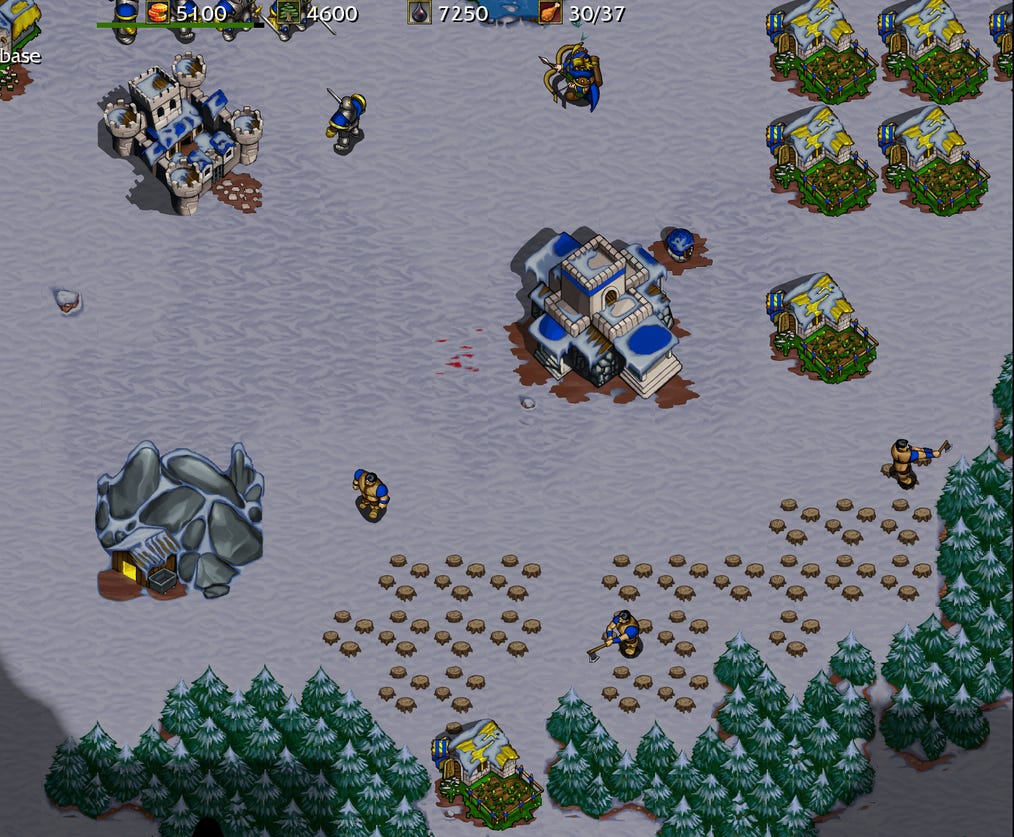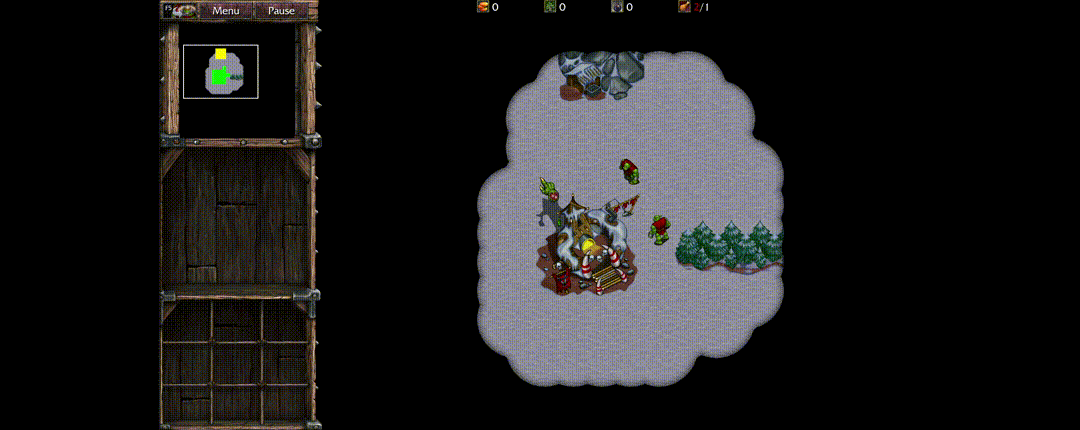Warcraft 2: Gold, Lumber and Peons
Discover how Warcraft II’s economy works—gold, lumber, and the hidden cost of worker time that shapes every game.
At its core, Warcraft II runs on two vital resources: gold and lumber. Gold is drawn from mines, while lumber comes from the forests scattered across the map. Both are finite, and once they run dry, players must push outward to secure new sources and keep their war machine running.
Gold is gathered from central mines that eventually collapse once emptied. Lumber, on the other hand, works differently: every harvest removes a tile of forest from the map, reshaping the terrain itself. As trees vanish, choke points open up, battlefields shift, and players are forced to expand deeper into the wilderness to sustain their economy.
Key Differentiators
The way Warcraft II handles gold and lumber isn’t just about gathering numbers; it’s shaped by three important factors:
Collection Location – Gold is gathered from fixed mines, which act as static points until they’re depleted. Lumber, however, is scattered across the map, and each tree chopped down slightly alters the terrain.
Travel Time – Peasants and peons must walk to the resource and then return to a Town Hall (or equivalent). The further the distance, the slower the overall flow of resources.
Collection Time – The actual harvesting process differs. Gold extraction is relatively quick once the worker reaches the mine, while lumber requires chopping down trees, adding more variance to the gathering cycle.
💡Upgrades matter too. Structures like the Lumber Mill and advanced Town Halls provide efficiency bonuses that shift the pace of your economy. These synergies—and their impact on long-term strategy—deserve a deeper dive, which I’ll explore in upcoming articles.
To put numbers behind these mechanics, I ran a small experiment using the Warcraft II map editor. The setup was simple:
A gold mine was placed at the minimum possible distance from the Town Hall to measure baseline efficiency.
For lumber, I created a single line of trees extending outward from the Town Hall. This setup simulated what happens as nearby forests are depleted, forcing workers to travel farther and farther for each load of wood.
Based on my analysis of play times
The results were striking: a peasant or peon takes nearly three times longer to harvest lumber compared to gold. And this gap only widens over time. If the experiment had continued, gold would have pulled even further ahead in efficiency, since each load of lumber required workers to travel deeper into the forest as the closest trees disappeared.
Normalising Worker Cost
One fascinating outcome of this comparison is that we can normalize all resource costs against gold. By treating gold as the baseline currency, every action a worker takes—whether chopping lumber, mining gold, or contributing to upgrades—can be expressed in a common unit of value. This creates a powerful framework for measuring the true economic impact of different choices.
Buildings add another layer of economic complexity. Every time a worker constructs a structure, their gathering cycle is interrupted, and their time is effectively “spent” on construction instead of resource collection.
If we assume that a standard gold-harvesting trip takes 12 seconds, then the time invested in building can be translated directly into an equivalent gold cost. This makes construction not just a matter of raw resources, but also of opportunity cost—how much gold (or normalized value) is forgone while that worker is occupied.
💡When you factor in construction time, the hidden costs become clear. Roughly 40% of the total cost of a building comes not from its listed resource price, but from the lost productivity of the worker tied up in construction instead of harvesting.
This “invisible tax” acts as a powerful economic lever, subtly shaping how efficiently a player can expand. Over the course of a match, these opportunity costs can add up to a significant drag—or advantage—on a player’s economy.
Conclusion
What makes Warcraft II’s economy so compelling is that it’s never just about numbers—it’s about choices. Every peon assignment, every building placed, and every forest cleared carries both immediate and long-term consequences. Mastering the balance between gold, lumber, and worker time transforms the economy into a strategic battleground all its own.
This is just the beginning of exploring Warcraft II’s economic depth. In future articles, I’ll dive deeper into the role of upgrades, building synergies, and how small efficiency gains can snowball into overwhelming advantages.
So next time you’re managing your peons, remember: efficiency isn’t just about gathering faster—it’s about making every second of worker time count.






